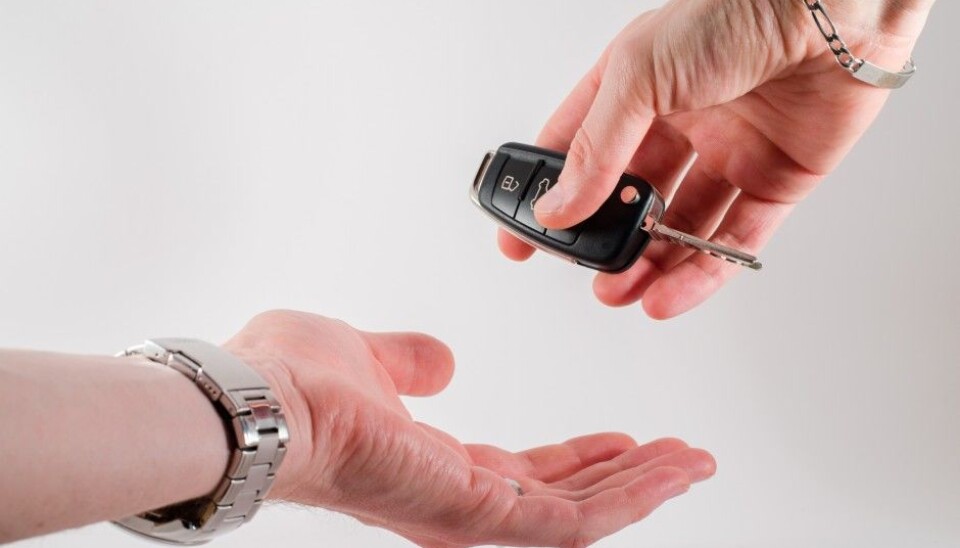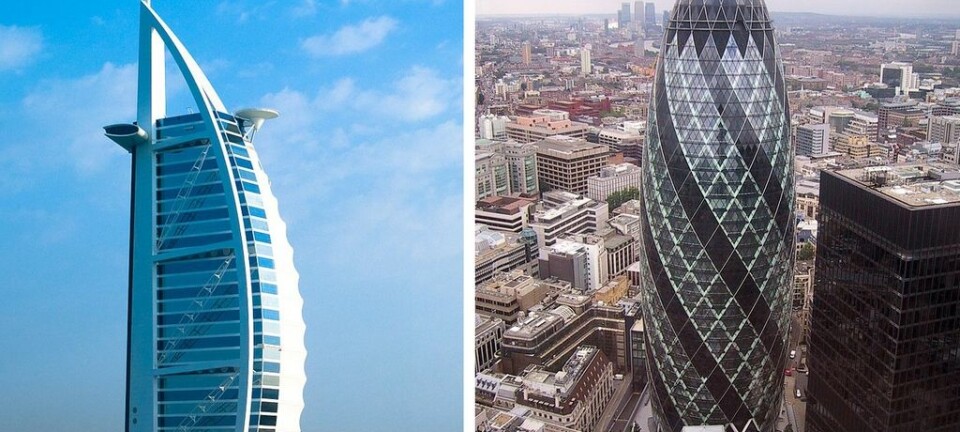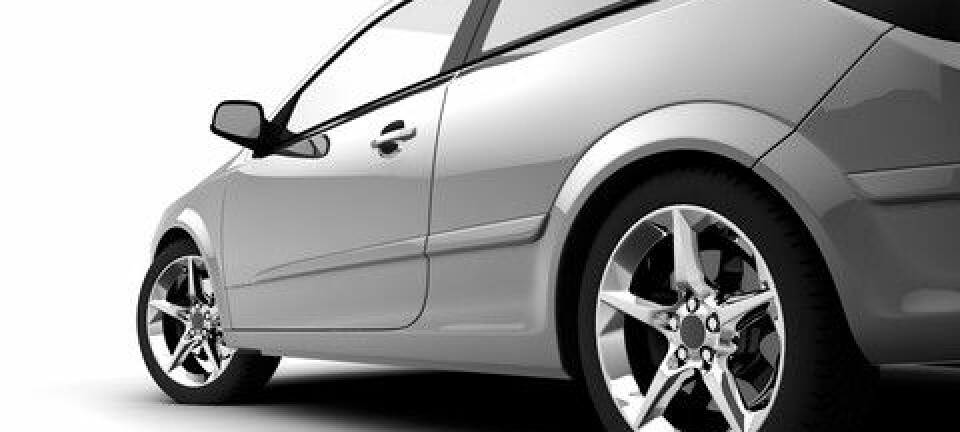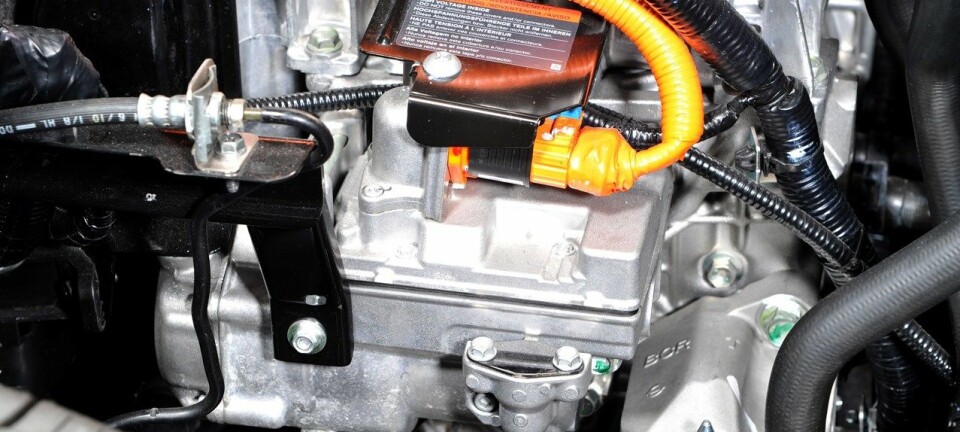An article from University of Oslo

Car-sharing greens the city
Sharing your neighbour's car may be the most climate-friendly way of getting to work. One shared car can replace as many as 13 privately owned vehicles.
Denne artikkelen er over ti år gammel og kan inneholde utdatert informasjon.
In the green, smart city of the future, we will probably travel quite differently from today. Maybe we'll live right by the train station and cycle to the office on a shared city bike. Or we may check an app on our mobile to see if anyone else is heading in the same direction, so that we can drive together.
Both ride-sharing and car-sharing are growing trends in the new sharing economy. The best known example of such collaborative consumption is Airbnb, a company that mediates the rental of private rooms to travellers all over the world. But new schemes are also popping up in the transport sector.
A new economy
"Sharing of bicycles and cars is an innovative means of transport that fits perfectly into the smart city in many ways. We'll be living closer together in the future, and sharing vehicles will be even more efficient in a compact city," says Lars Böcker, a researcher at Oslo University's Department of Sociology and Human Geography.
There are a number of advantages to joining a car-share cooperative, where members share cars as needed, or a subscription scheme where you locate the closest car available when you want to go somewhere.
Users don't have to think about fixed expenses, parking problems, insurance, battery charging or fuelling. The idea is that you have access to a vehicle only when you need it.
The city combats climate change
Shared mobility, researchers call this phenomenon.
"Shared-use mobility has had a transformative impact on many global cities by enhancing transportation accessibility while simultaneously reducing ownership of personal automobiles," write researchers Susan Shaheen and Nelson Chan at Berkeley University in a new report.
In the EU, as much as 72 percent of the population lives in cities, and cities account for 70 percent of energy consumption. If society is to be swung in a more climate- and energy-friendly direction, it is in the city it must happen.
More people, less driving
This is also the conclusion of the Oslo City Council. The capital city's new climate and energy strategy sets ambitious goals for cutting greenhouse gas emissions. Oslo is to go green, and that requires a number of innovative changes. Transport and communications are one of the key areas.
Although Oslo has a growing population, the goal is that all increases in transport should be environmentally friendly. That means we have to walk, cycle, or use public transport. Car-sharing or ride-sharing can also be means of achieving the goal.
The EU energy plan also places emphasis on new, innovative ideas of this kind. The plan states that the potential for services and smart technology that combine energy, transport and digital technology is enormous.
"Car-sharing and ride-sharing are phenomena that have emerged thanks to new IT technology. The financial crisis also played a part. When people's income falls, they look for ways of making savings in everyday life," relates urban researcher Böcker.
Great potential
But how do these social transport schemes help to reduce greenhouse gas emissions? The potential gain is two-fold:
"Car-sharing and similar arrangements can mean both less energy consumption and lower emissions," explains Böcker, and adds:
"But the emission cuts depend on whether the amount of travelling actually is being reduced as a result of the sharing, and that car manufacturing also falls because there are fewer cars."
Research in the USA shows that this is in fact the case.
Fewer cars on the road
In 2014 there were 23 car-share operators in the USA. They had 1.3 million members who shared 19,115 cars. In a survey conducted by the Transportation Sustainability Research Center at Berkeley University, the consequences of car-sharing for 9,500 car-sharers were investigated.
Twenty-five per cent of participants had sold their cars, and just as many had postponed the purchase of a new vehicle. The researchers concluded that one shared car replaced between nine and 13 privately owned cars. For one family, this meant a 34–41 percent greenhouse gas reduction.
Another positive finding was that those who shared cars also made more use of public transport, bicycles and walking. And there was money to be saved: Between USD 154 and USD 435 per household, after they started car-sharing.
A win-win situation
"The sharing economy matches someone who has a surplus product or service with a potential consumer. This is a fast-growing economic phenomenon," relates Böcker.
Car-sharing has taken off in the last five years, and is expected to grow 36 percent annually up to 2020.
"The potential for greenhouse gas cuts and energy-saving is considerable if car-sharing means that we only use the car when we really need it. For the present, however, we don't know enough about how such arrangements affect people's movement pattern; more research is needed," says the researcher.
No niche
Böcker has studied attitudes to the sharing of products and services in Amsterdam. He found there that women were more positively inclined to sharing than men, and that the elderly were less willing to share services and products than younger people. People with a non-Western cultural background shared more than the average.
"The survey also enquired about the motivation for sharing. In the case of car- and ride-sharing, it was environmental considerations, or the desire to save money," according to the researcher.
The survey also revealed that a broad swathe of the population is positively inclined to the sharing economy.
"This means that these schemes have a potential for considerable up-scaling; they do not represent a niche phenomenon. Only a few people need a car daily in the city, but many need access to a vehicle now and then, when they want to take a trip to their cabin or buy furniture. Sharing can give more people access to a vehicle in just this sort of situation, without there being an increase in the total amount of vehicle transport," says Böcker.
-----------------------------
Read the Norwegian version of this article at forskning.no


































